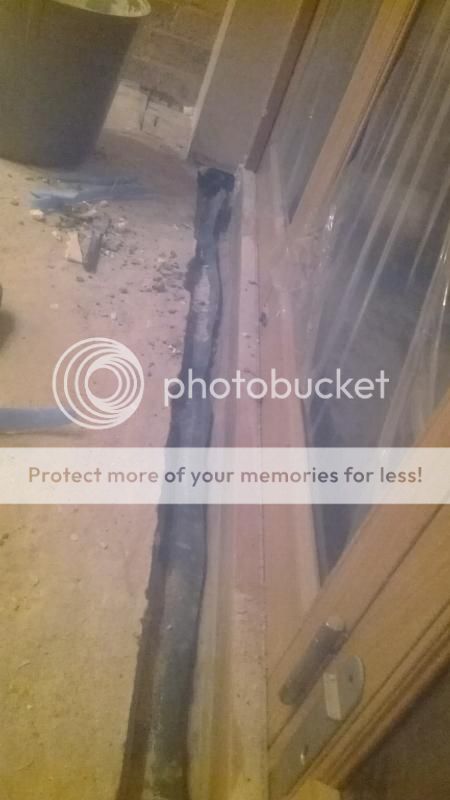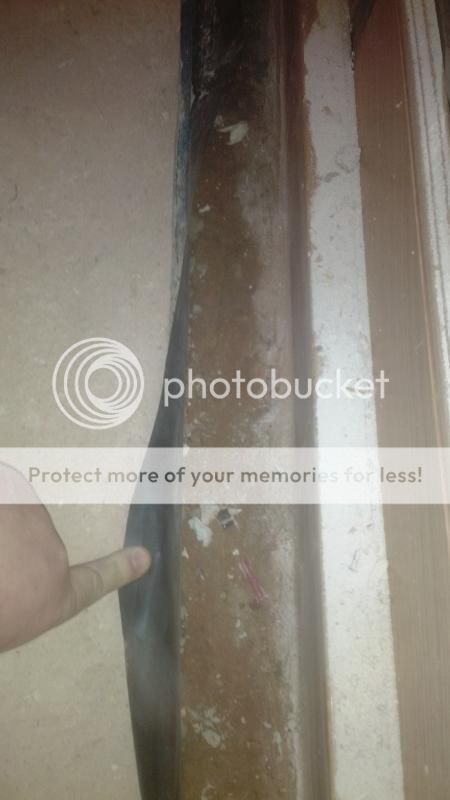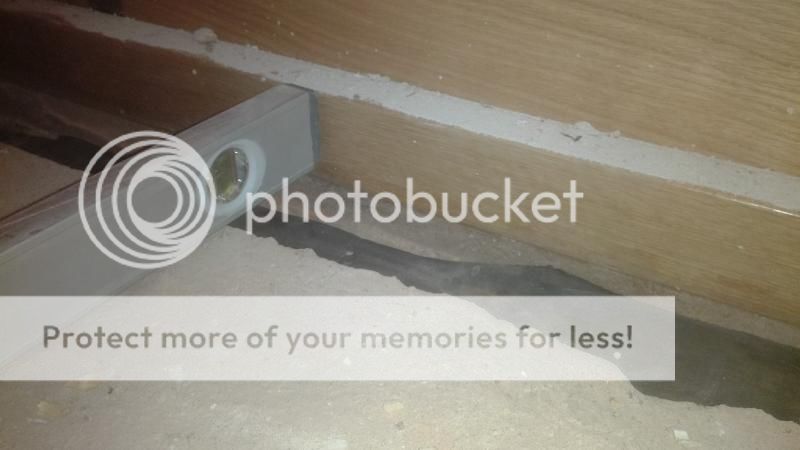I have knocked through several rooms downstairs. Some of the floors were at different levels, so I dug it out and have put a new floor in. The floor was sand, damp proof membrane, 100mm celotex and 100mm of screed.
When the floor went in the doors weren't in, but the doorways were knocked out. I've got some little gaps to fill in where I blocked the doorways up with 4x2 wood. I was planning on mixing up some 4:1 sharp sand/cement to fill these.
All this seems quite straightforward but when the screed dried out I cut the damp roof membrane flush with the edge of my floor. Now I need to fill in the doorways the membrane wont stretch round the little recesses.
I was considering either:
1. just fill the gaps in. The gaps are on top of the blue brick course anyway.
2. join some extra membrane to cover the gaps - one of the reasons I am not so sure about this is that it will mean that the side of the membrane is up against my wooden doorframe, so if any damp did come up from underneath it might rot my door.
or is there a third way....?
Here are some pictures.




When the floor went in the doors weren't in, but the doorways were knocked out. I've got some little gaps to fill in where I blocked the doorways up with 4x2 wood. I was planning on mixing up some 4:1 sharp sand/cement to fill these.
All this seems quite straightforward but when the screed dried out I cut the damp roof membrane flush with the edge of my floor. Now I need to fill in the doorways the membrane wont stretch round the little recesses.
I was considering either:
1. just fill the gaps in. The gaps are on top of the blue brick course anyway.
2. join some extra membrane to cover the gaps - one of the reasons I am not so sure about this is that it will mean that the side of the membrane is up against my wooden doorframe, so if any damp did come up from underneath it might rot my door.
or is there a third way....?
Here are some pictures.






